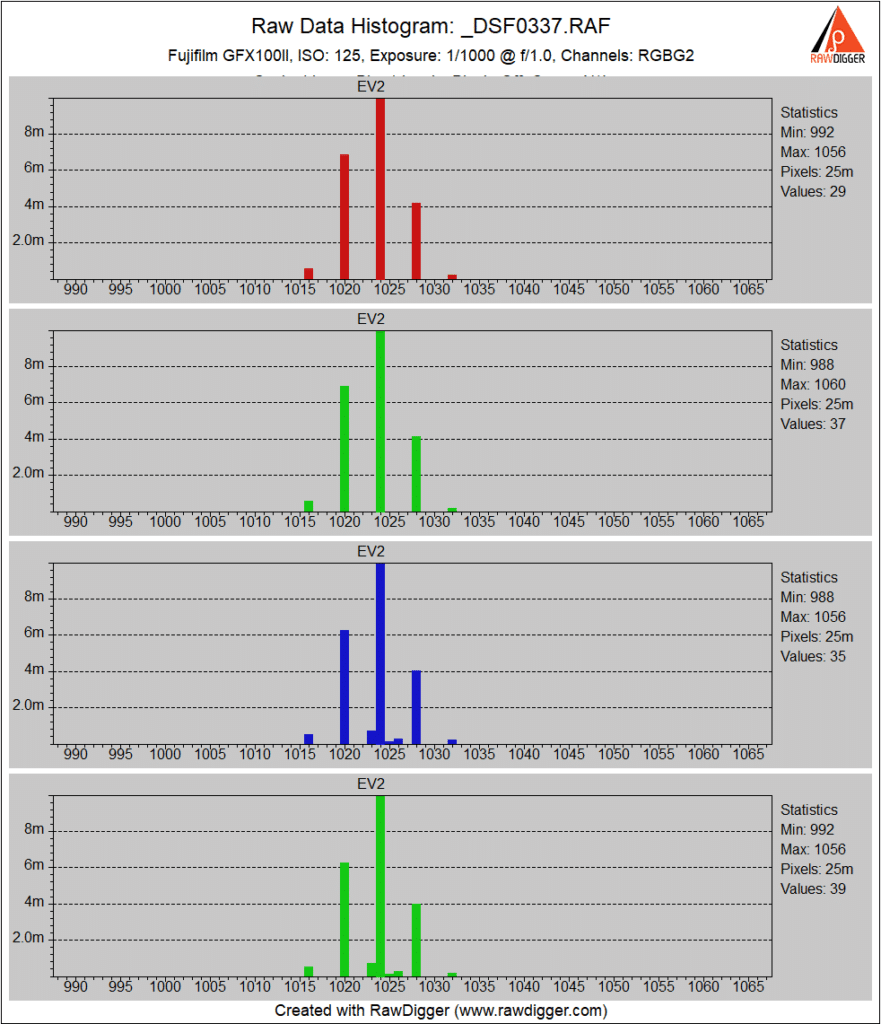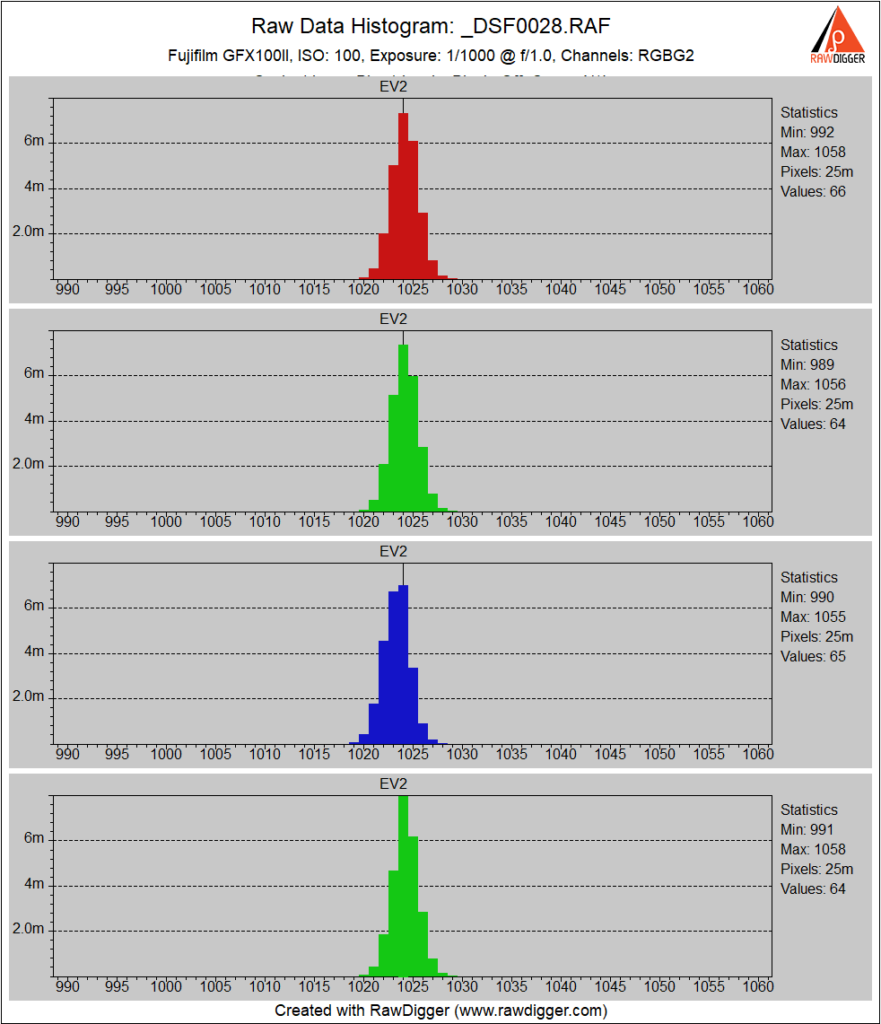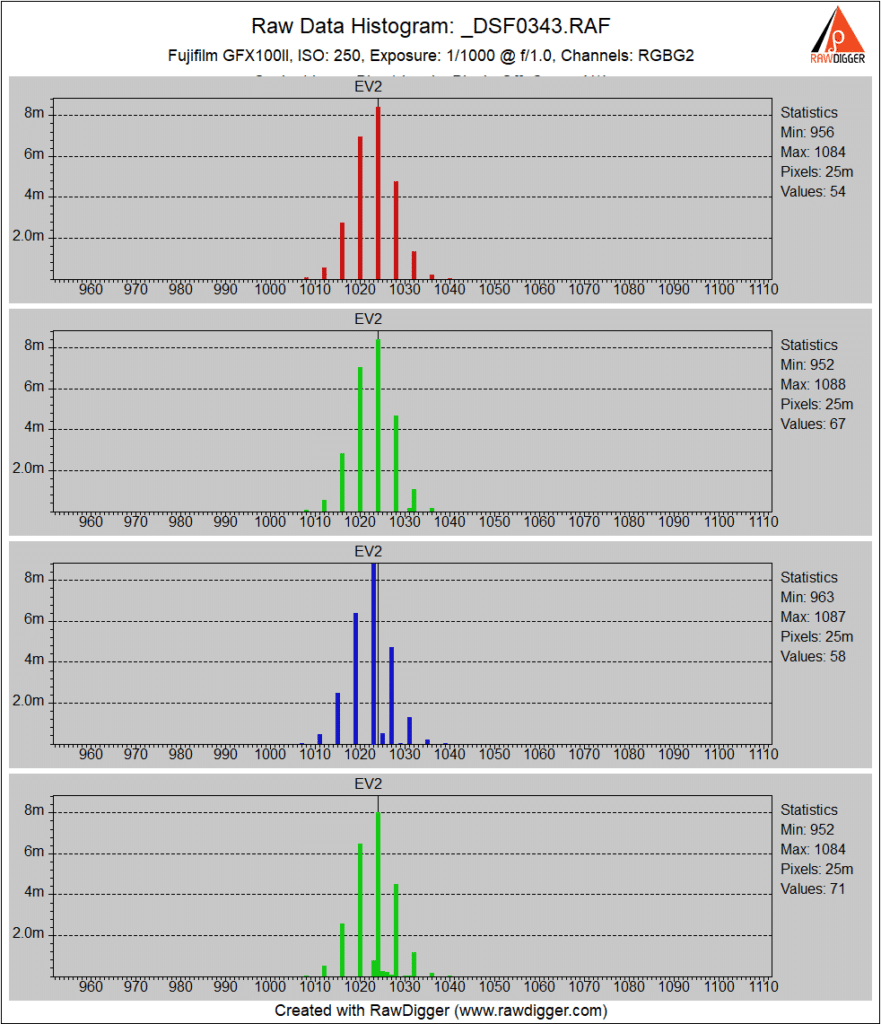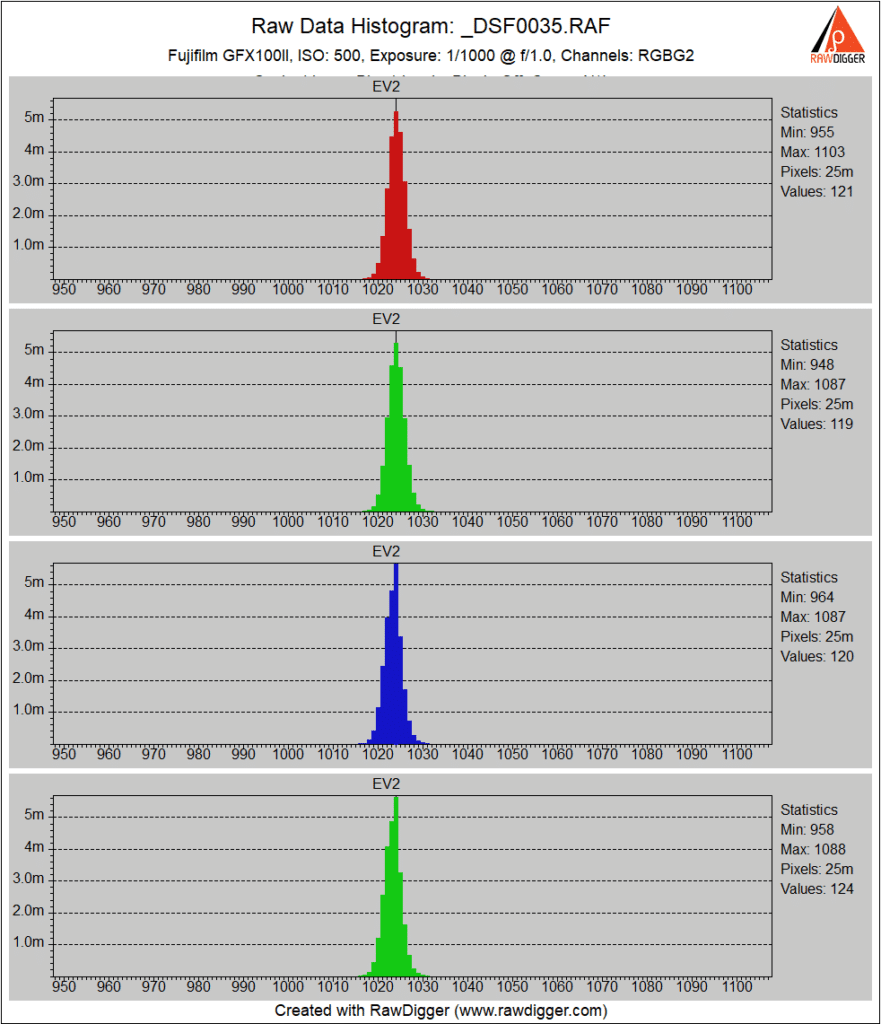This is the 21st post in a series of tests of the Fujifilm GFX 100, Mark II. You can find all the posts in this series by going to the Categories pane in the right hand panel and clicking on “GFX 100 II”.
I’ve been asked how sure I am that the Fujifilm GFX 100 II uses 12-bit precision in CH mode.
Answer: pretty darned sure.
I’ve showed you the EDR curves for CH and the other shutter modes, but now I”m going to show you the smoking gun: the raw histograms.
This is a dark-field shot with the shutter mode set ot CH. It presents as fourteen bit data, but if you look at the histogram you can see that there are three empty “buckets” for every full one. This means the data is 12-bit data.
There is a bit of data in the other buckets for the blue and the second green channel, which is the result of PDAF pixel interpolation and the spatial filtering we observed earlier.
If you look at single shot more, all the histogram buckets are populated.
This is true at all the reasonable ISO settings.
Here are a pair of histograms at higher ISO:




Question if you know? Out of curiosity at 5.6FPS does the Hasselblad x2d also throttle down to 12 bit?
Interesting question. I’ll take a look.
I checked it out. The fastest the X2D can go in continuous drive mode is 3.3 frames a second.
Great to know slightly over 3fps so the X2D 100C is able to continuously shoot 16-bit RAW images in Continuous Drive Mode?
Hi, Jim.
https://imgur.com/e3uuTMU
https://imgur.com/4aoUYqy
https://imgur.com/X9lpqHJ
https://imgur.com/ftnUmkU
https://imgur.com/Nw6grgZ
https://imgur.com/nORAjzg
Here’s the Datsheet of the IMX461AQR-C Sensor.
If GFX 100 II don’t use a new sensor, technically it could not be 14Bit RAW in CH Mode.
Other than that, have you tested the electronic shutter reading time for non-ISO80? I suspect that ISO80 is read via Dual-Steam merge to reduce readout noise, or some sort of DCG-HDR is applied.
And it’s not 14 bits in CH mode.
Yes, it’s a 14-bit file with 12-bit raw and some processing.
According to your tests, the GFX100 II has a surprisingly close readout time to the IMX461AQR/ALR. According to the datasheet and actual engineering tests, the IMX461AQR/ALR would have to use a 12bit ADC to break 6fps. so I’m very sceptical about the new sensor Fujifilm is advertising.
In practical engineering, I don’t like to use the 12bit mode of Sony’s 3.76μm series (IMX533,IMX571,IMX455,IMX461,IMX411) because of its high quantisation error and worse ADC performance, which leads to a dip in dynamic range.
And in CH mode but at 5fps is it a real 14 bits?
No. 12, and maybe 13 at ISO 80.
That’s such a bad news! I don’t care much about 8 fps but I use a lot the 5fps with the 100 and at 5fps Fuji should give us at least 14 bit precision like in the older models… now I don’t know if I’m interested anymore in the 100II.
Thank you so much, Jim, for your work here… it’s like a Bible for us MF users.
“…have you tested the electronic shutter reading time for non-ISO80?”
I just did. Same as for ISO 80, both with 14-bit and 16-bit precision.
Thanks for your thoughtful work.
In that case, ISO80 might not be a DCG or dual ADC read implementation.
According to some video user tests, the GFX 100 II’s video readout speed ( DCI 8K/UHD 8K pixel2pixel readout at 1/32 s ) happens to be nearly double that given by the IMX461 in 11/12bit AD. Perhaps the GFX100 II speeds up 11Bit AD, or features a new 10Bit AD (which is not supported by the IMX461). But arguably no growth in still photography.
This sensor is really weird. A special, lower dark noise ISO80. A faster but more noisy videor readout. Really wonder what magic Fujifilm put inside the GFX100 II.
Can you give a brief description on how I could reproduce this test? I want to do it in my X-S20, to see if there is a bit-depth difference between the electronic and mechanical shutter (Fujifilm never clarified this too…)
Take the lens off the camera. Put the body cap on. Make the exposures. Bring the raw files into RawDigger. Turn off black point correction. Select the histogram display. Set the x-axis to linear. Set the bucket size to one. Set the upper and lower bounds just below and just above the black point.
At CL mode,is the camera work at 14bit? thanks